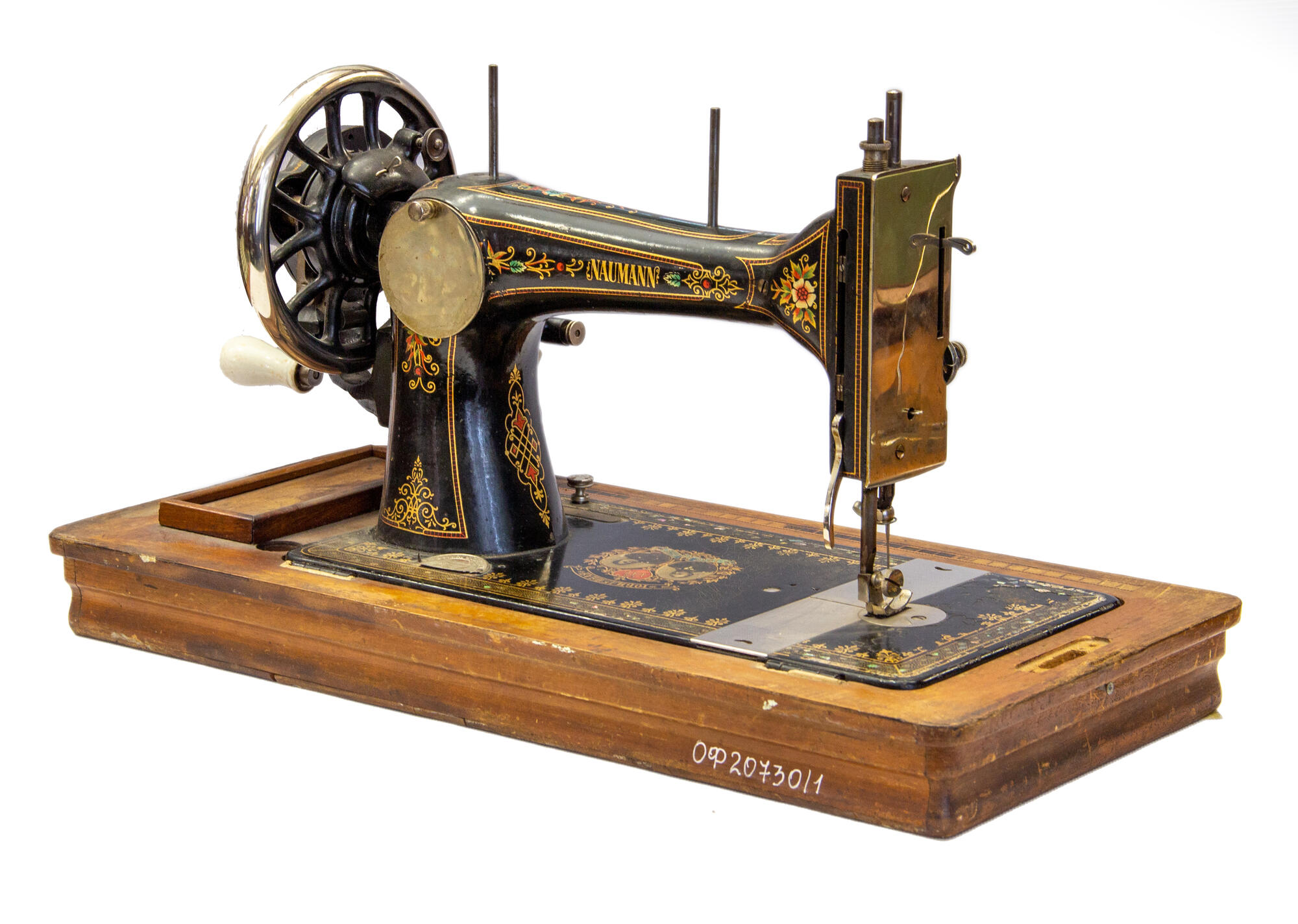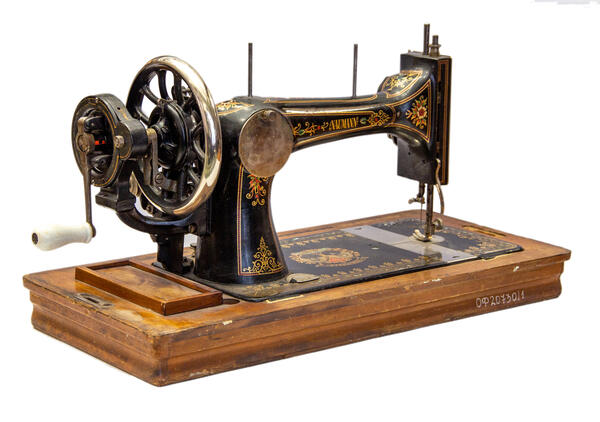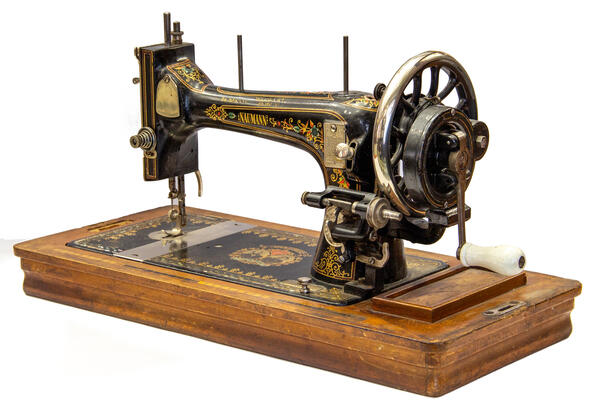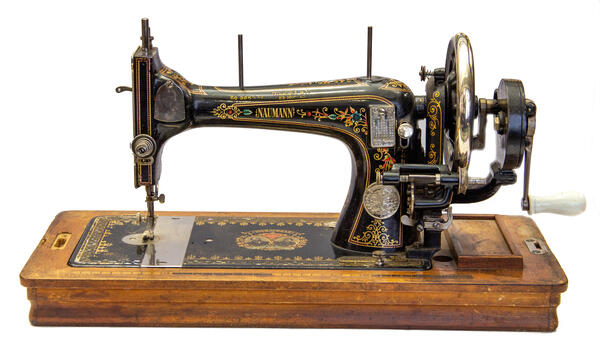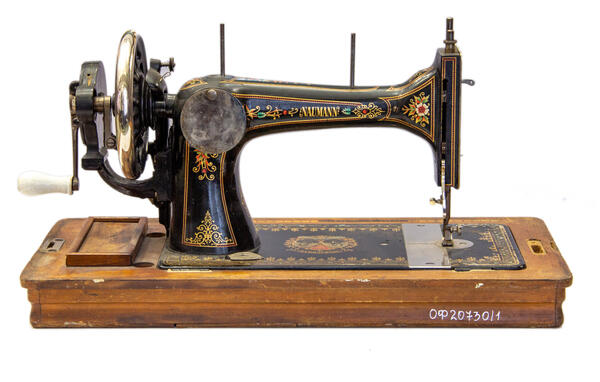The inventor of the very first sewing machine is unknown. Many people have tried to create one — from Leonardo da Vinci to Dutch, French, English and German engineers. In 1845, the American Elias Howe patented his model and was able to launch it into mass production after some time. This model was truly massive and popular. His compatriot Isaac Singer, an employee of the workshop for the repair of Howe cars, modified the design of this model and opened his own production with borrowed money.
In the mid-19th century, German and American manufacturers began distributing sewing machines to Russia. By the 1860s, there were sales offices of such brands of sewing machines as “Singer” and “Seidel & Naumann” in Russia. However the more common way of acquiring a sewing machine was through so-called “trading houses”. Usually it was a shopping center or a chain of stores named after the owner’s last name. The most famous trading houses that sold sewing machines were “Zh. Blok” and “I.V. Popov”. In 1875, the “Russian Partnership for the Trade in Sewing Machines of Popov and Co.” was established in the Russian empire in accordance with the laws of the state. Until the beginning of the 20th century, this very partnership was the most widespread and largest seller of sewing machines. And so these sewing machines became known colloquially as the “Popovkas”. The partnership traded German and English equipment. By 1914, Russia became the second largest consumer of household sewing machines in the world. It was beaten only by the USA and its northern state. In Russia, around 700 thousand sewing machines were sold annually, turning a profit of 63.5 million rubles.
This exhibit is a straight-line metal tabletop manual sewing machine made by the German company Seidel & Naumann by order of the company’s trade representative office in Russia. It was produced as part of a special series “Popovka-Jubilee” and features a patented festive design. The sewing machine is decorated with a mother-of-pearl floral ornament. At the base of the machine are the dates 1870 and 1895. According to one version, these were anniversaries for the Popov Trading House (later renamed to Partnership). According to the other, these dates commemorate the 25th anniversary of the Popov couple’s wedding. On the upper part there is an inscription “By order of Popov and Co in Moscow”, “Patent No. 11025”, machine number — 2370633. It belonged to a wealthy peasant family in Tyumen.
